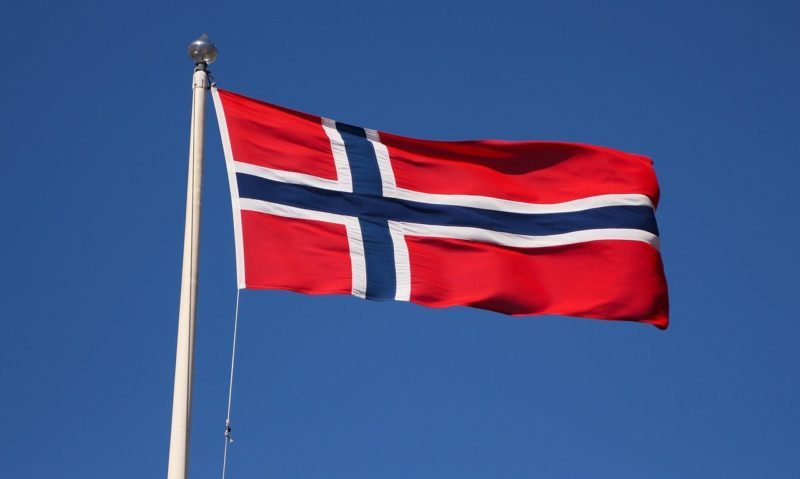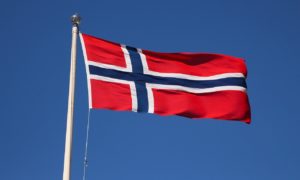Norwegian Is an Incredible Language
Norwegian is undoubtedly an awesome and fascinating language. And there’s a lot about it that I want to tell you. Everybody should know the awesome history of the Norwegian language. The grammar rules and current use of Norwegian are also very interesting topics. So, without further ado, let’s dive into an in-depth account of every fact, so you know absolutely everything about the Norwegian language.
Norwegian Language Overview
Norwegian is the main language of Norway, and it’s spoken by nearly 5 million people. In Norway, they call this language “norsk”. Norwegian is in the North Germanic Language family. Since English is West Germanic, they are related languages.
But, Norwegian is much more closely related to other North Germanic languages, which are Swedish, Danish, Icelandic, and Faroese. Some say these aren’t even separate languages, only dialects of the same Nordic language. But, of course, we think of them as different.
Of all Nordic languages, Norwegian is especially closely related to Danish and Swedish. That’s partially because they’re very close to each other geographically. Written Norwegian, Danish, and Swedish actually look similar enough to be mutually understandable. But, we can’t say the same about the sounds of these languages.

The History of the Norwegian Language
Proto-Germanic was Norwegian’s ancestor. By the 2nd century CE, Proto-Germanic branched out into different dialects: West-, North-, and East-Germanic. Norwegian budded from the Northern dialect.
By the 8th century CE, the North dialect developed into Old Norse. You may have heard of this language as the language of Vikings. This feared and impressive nation was the ancestor of Norway. Over the next centuries, Old Norse evolved into the Scandinavian languages we know today.
The Story of the Two Standard Norwegian Dialects
Denmark and Norway have a shared history. They used to share a Union between 1376 and 1814. During this time, Danish was the written language of Norway. Even the Norwegian elite spoke Danish with a Norwegian accent. When the Union ended in 1814, the Norwegian people wanted their own language. But, not everybody wanted the same thing.
Some people wanted to begin reconstructing Norwegian from Danish. This movement ended in the invention of the written Riksmal, the ancestor of Bokmal (Book language). However, others wanted Norwegian to be more unique, and base it off the Norwegian dialects spoken in more rural areas (where the original Norwegian was more preserved). This new Norwegian was called Landsmal, the ancestor of Nynorsk (New Norsk). This was more conservative than Riksmal.
Riksmal still exists today, but the updated version, Bokmal, is much more common. And the same thing happened to Landsmal. After the modernization of the dialect, Nynorsk was born from it. In fact, Bokmal and Nynorsk are more similar to each other than Riksmal and Bokmal originally were.
Today, Bokmal and Nynorsk are the standard Norwegian dialects that the administration uses for writing. These connect and unite the many varying dialects of Norwegian that still exist.

Standard Norwegian Dialects: Bokmal and Nynorsk
The dialects of Norway vary greatly from each other. So, Standard Norwegian is the language that unifies this vast country and its residents. But, there are actually two different versions of official standard Norwegian.
- Bokmal: Norwegian developed from Danish
- Nynorsk: clear Norwegian with an intention to reform the language
Local governments can choose with version of standard Norwegian they want to use. Around 26% chose Nynorsk, 37% chose Bokmal, and 37% chose to remain neutral (but even those usually prefer Bokmal). These standard Norwegian dialects are mostly just used in writing. When locals speak to each other, they use their own regional dialect still.
The Norwegian Alphabet
Luckily for Norwegian learners, the Norwegian alphabet is based on Latin letters. So, those who speak English already have an advantage. Since Norwegian and Danish share a tight history, the Norwegian alphabet is the same as the Danish alphabet. There are 29 letters in the Norwegian alphabet.
A a |
Å å |
Æ æ |
B b |
C c |
D d |
E e |
F f |
G g |
H h |
I i |
J j |
K k |
L l |
M m |
N n |
O o |
Ø ø |
P p |
Q q |
R r |
S s |
T t |
U u |
V v |
W w |
X x |
Y y |
Z z |
As you can see, there are three letters in the Norwegian alphabet that can be unfamiliar to English speakers: å, æ, and ø. These signal a slightly different variation of the pronunciation.
It’s worth mentioning that Norwegian words don’t actually contain the letters c, q, w, x, and z. But, you may see them in foreign loanwords and names.

Norwegian Pronunciation
Since there are such great differences between the accents of Norwegian dialects, pronunciations vary greatly. Luckily, every accent is considered correct. So, Norwegian learners don’t have to stress about which dialect to follow.
Pronouncing Norwegian Consonants
While Latin letters certainly make Norwegian easier to read, saying the letters out loud is a little different than in English. Here are the most striking differences in pronunciation for Norwegian consonants.
- g: hard g (like get) (god – good)
- g: soft j (like yes) before ei, i, or y (giraff – giraffe)
- j: soft j (like yes) (jord – earth)
- r: rolled (this one varies by dialect, it can also sometimes be more like the French r)
- k: unlike in English, k is pronounced before n in Norwegian (kniv – knife)
- k: hj (like hue) before ei, i, or y – (kylling – chicken)
Silent Consonants in Norwegian
There are also certain situations where the consonants are silent. These are:
G
- if a word ends in -ig or -eg (kraftig – powerful)
- before j (gjest – guest)
D
- after r, l, or n (kaldt – cold)
- after a long vowel (god – good)
H
- before j and v (hva – what)
T
- in the definite form of neuter nouns (huset – house)
- in the neuter pronoun det (it)
V
- after l at the end of the word (halv – half)
Digraphs in the Norwegian Language
Digraphs are letter combinations that represent a single sound. So, when you see the following consonants next to each other in Norwegian, this is how you need to pronounce them. There’s also a trigraph in Norwegian (skj), where three letters represent one sound.
Norwegian Digraph |
How to Pronounce It |
Example |
kj |
hj (like hue) |
kjole – dress |
sj |
sh (like ship) |
sjø – sea |
sk |
sh before ei, i, or y
sk everywhere else |
skitten – dirty
sko – shoes |
skj |
sh (like ship) |
skje – spoon |
tj |
hj (like hue) |
stjerner – stars |
Long Consonants
When you see consonant clusters or double consonant letters in Norwegian, you need to pronounce them as a “long consonant”. You need to hold the sound for longer than usual. For example:
- jakke – jacket
- katt – cat
Vowels in the Norwegian Language
There’s also a difference in how you pronounce short or long vowels. For example, before a long consonant, you need a short vowel. And the opposite happens when the consonant is short. Then the vowel is long.
Norwegian has x vowels, but they may have a different sound in different words. Apart from the usual a, e, i, o, and u, Norwegian also has special vowels.
- Y: pronounced as ee in meet (sykkel – bicycle)
- Ø: pronounced like uh (ørken – desert)
- Æ: sounds like a in sat (lærer – teacher)
- Å: like a in yawn (tåket – foggy)
Pitch Accent in Norwegian Speech
When your speaking Norwegian, your intonation matters. If you want to perfect your pronunciation, you need to pay attention to this. There’s a tonal difference between high and low pitched syllables in Norwegian. You can intonate a word in two different ways:
- low-high: bønder – farmers
- high-low-high: bønner – beans
This is important because the meaning of a word can change according to the pitch accent. While every dialect is different, learners should still try to master this pitch accent when they’re speaking Norwegian.
So, is Norwegian a tonal language?
Yes, this pitch accent which influences the meaning is a very similar concept to the Chinese tonal differences. But, while in Chinese the tonal effect influences the entire word, in Norwegian, the pitch accent is more concentrated on a specifically stressed syllable.
The Grammar of the Norwegian Language
Luckily for native English speakers, the grammar of Norwegian is fairly easy. Those who already speak English will find the grammatical rules of Norwegian simple to understand and follow.
Norwegian Sentence Structure
Just like English, Norwegian word order is SVO (subject-verb-object).
- Hildur has eaten all the sursild. – Hildur har spist all sursild.
As you can see, the words, conjugation, and word order are extremely similar. Sursild, by the way, is a traditional Norwegian pickled herring.

Norwegian Verbs
You’ll be glad to hear that Norwegian verb conjugations are even simpler than English. You conjugate all verbs by the tense. The person or the number doesn’t matter at all. Let’s take a look at an example in the present tense.
to walk – å gå
English |
Norwegian |
| I walk
you walk he walks she walks we walk you walk they walk |
jeg går
du går han går hun går vi går dere går de går |
As you can see, the pronouns change, but the conjugation of the verb doesn’t. Now, let’s take a look at the simple past and future forms of the same verb:
- I walk – jeg går
- I walked – jeg gikk
- I will walk – jeg vil gå
As you can see, even the auxiliary verb “will” is similar in the future tense.
Does the Norwegian Language Have Genders?
Yes, this is one of the few grammatical differences between Norwegian and English. Norwegian nouns have three genders: masculine, feminine, and neuter. Sometimes, the genders of words are obvious, like en mann (a man) is masculine, and ei kvinne (a woman) is feminine. But, when the divide isn’t this clear, the gender needs to be memorized.
It’s worth noting that in Nynorsk, using all three genders in mandatory. But, in Bokmal, you can choose to use a common gender to replace masculine and feminine. You’d still need the neuter though.
Gender in the Norwegian language matters because the gender of a noun changes the article and adjective attached to it.

Articles in Norwegian
Norwegian has definite and indefinite articles, just like in English. But, they’re quite different. First of all, they’re gender-specific. So, you need to match the article to the gender of the noun it’s describing.
Indefinite Articles
In English, the indefinite articles are “a” and “an”. There are three indefinite articles in Norwegian:
- en for masculine
- ei for feminine
- et for neuter
(In Bokmal, there’s no feminine, and they only use the masculine form. So, in the Bokmal written form, it would be “en” indefinite article even for the feminine nouns).
Definite Articles
Unlike English, where the definite article “the” comes before the noun, in Norwegian, it comes after it. In fact, the definite article in Norwegian is attached to the noun itself. But, it’s still gender-specific. Here’s what this looks like in practice:
- mannen – the man
- kvinna – the woman
- barnet – the child
(In Bokmal, since there’s only a common gender, the feminine indefinite article changes to the masculine one too. In written Bokmal, “the woman” would be “kvinnen”).

Norwegian Nouns
Of course, gender is a major topic about Norwegian nouns. But, how do you make nouns plural? Well, the most common way to make nouns plural in the indefinite form is to add “-er”.
-
- horses – hester (best)
- cities – byer (by)
- women – kvinner (kvinne)
But, just like in English, there are some irregular words that don’t have an “-er” plural form. Some remain the same:
-
-
- mountains – fjell (fjell)
-
Others change their vowels:
-
-
- men – menn (mann)
-
In the definite form, you need to add “-ene” to the end of plural nouns:
-
-
- mennene – the men
- kvinnene – the women
- barnetene – the children
-
Norwegian Adjectives
The adjective in the Norwegian language needs to match the qualities of the noun it’s attached to. So, you need to pay attention to the gender and the number of the noun. For example, if the adjective is plural, you need to add an -e to the adjective as well as pluralize the noun.
-
-
- smart – smart
- smart men – smarte menn
- smart women – smarte kvinner
- smart children – smarte barn
-
Is Norwegian Hard to Learn?
No, Norwegian is considered fairly easy to learn for native English speakers. That’s because the two languages are really closely related. As you could see, the grammar is almost entirely identical. And even the words are fairly familiar in many cases.
The US Foreign Service Institute put together a guide that compared how easy or hard learning languages is for native English speakers. According to them, learning Norwegian is as easy as learning French or Dutch. It’s in the first category, so you can reach Norwegian fluency in around 600 hours.
But, of course, this is just a guide. You can actually probably learn it faster if you use the right methods.
Is Norwegian Worth Learning?
Even though Norwegian is one of the easiest languages to learn for native English speakers, speaking it fluently is incredibly impressive. The time and energy you put into learning it will definitely bring you extraordinary benefits.

Speaking Norwegian can open doors for you in your career. Since Norway’s economy is booming, there’s surely a lot of opportunities to work. Bilingual employees also earn more money, so learning Norwegian could also lead to a higher paycheck. Not to mention the mental health benefits speaking a second language can have. Studies linked bilingualism with decreased chances of dementia and Alzheimer’s at old age. That’s certainly worth learning Norwegian for.
Finally, if you want to learn more Nordic languages, Norwegian is the best language to start with. It’s easier to learn other Nordic languages after you’ve mastered this one.
Learn the Norwegian Language with the Best App
Of course, to learn Norwegian well, you need a reliable language learning course. One that teaches you exactly what you need to communicate with the locals in Norway. And luckily, that’s the only goal OptiLingo has.
OptiLingo is an app that can get you speaking Norwegian in record time. How? By using two of its key features. OptiLingo’s vocabulary list dials down on only the most crucial and essential vocabulary. With these words and phrases, you can comfortably talk to locals, and you don’t have to learn expressions that you’ll never use.
And OptiLingo also focuses on making you speak, not type Norwegian. So your pronunciation develops from the first lesson onwards. To see how you can fast track your Norwegian studies, download OptiLingo today!






